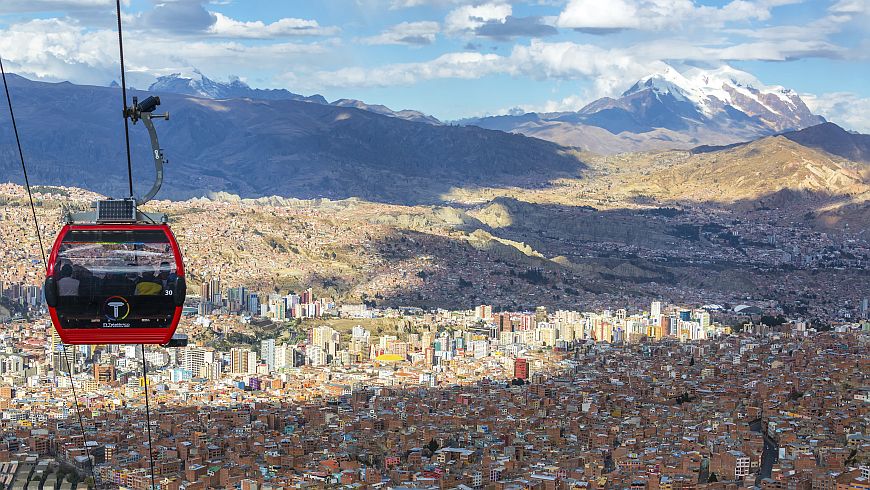Knowledge and technology transfer for cleaner air
Bolivia looks to improve its air quality

In the last decade, the number of cars on Bolivia’s roads has tripled. The enormous amount of traffic in cities like La Paz is the main culprit behind the high air pollution levels. Measurements revealed that the concentration of pollutants in Bolivia’s cities often exceeds the limits set by the World Health Organization (WHO). Bolivians are aware of this thanks to a project entitled Aire Limpio (i.e. “clean air” – the goal of the program).
Funded by the Swiss Agency for Development and Cooperation (SDC), the project was launched back in 2003, when measuring equipment was set up at various urban locations all over Bolivia. This measuring network was dubbed Red Monica and yields valuable data. Keeping it running around the clock while maintaining the quality of the readings, however, is a major challenge. Consequently, the two Empa researchers Martin Steinbacher and Julien Anet, who are both highly experienced in air quality measurements, traveled to La Paz in mid-October 2015.
Somebody to ask at last
In the metropolis 3,500 meters above sea level, one of the highest cities in the world, the two experts showed the Red Monica staff how to repair a measuring device. “The way the equipment works isn’t so straightforward,” says Steinbacher. “If there’s something wrong with my car, I take it to a mechanic at the nearest garage. But our Bolivian colleagues don’t have that luxury as there aren’t any service technicians in the country.” As a result, the Empa scientists trained the Red Monica crew, coordinated by MeteoSchweiz in collaboration with the CATCOS project (Capacity Building and Twinning for Climate Observing Systems), to enable them to work more independently in future.
The Bolivians also have to calibrate the highly sensitive measuring devices themselves. “It’s a bit like testing bathroom scales,” says Steinbacher. “You take a 50-kilo sack, stand on the scales and check whether the weight increases accordingly.” In air measuring technology, a gas sample with a known concentration of air pollutants is used instead of a sack.
Besides the practical workings of the equipment, handling the data was also a central aspect of the course. The two Empa researchers showed the participants how to develop suitable computer programs. “They were incredibly motivated,” says Steinbacher. “At long last, they had someone who could answer their questions.”
The keen interest wasn’t just limited to Red Monica staff, either. The Empa experts even welcomed the minister of the environment and organized a press conference especially. This went down extremely well with the Bolivian media, as reflected in numerous articles in the local press.
Bolivian population sensitized
Further information
Dr. Martin Steinbacher
Empa, Laboratory for Air Pollution/Environmental Technology
Phone +41 58 765 40 48
Dr. Julien Anet
Empa, Laboratory for Air Pollution/Environmental Technology
Phone +41 58 765 60 98
Editor / media contact
Remigius Nideröst
Communication
Phone +41 58 765 45 98
Service for media
Images can be downloaded here
-
Share

